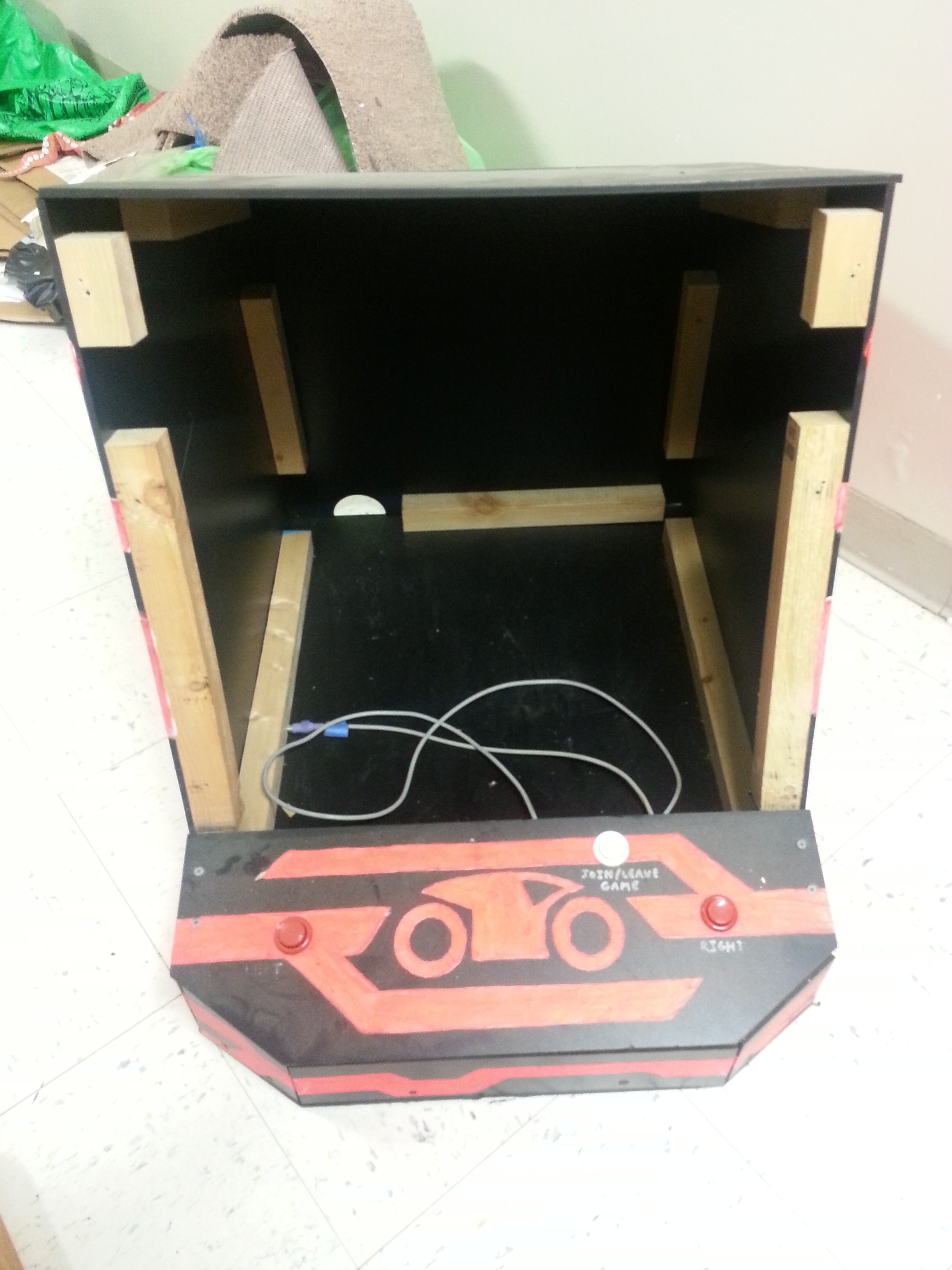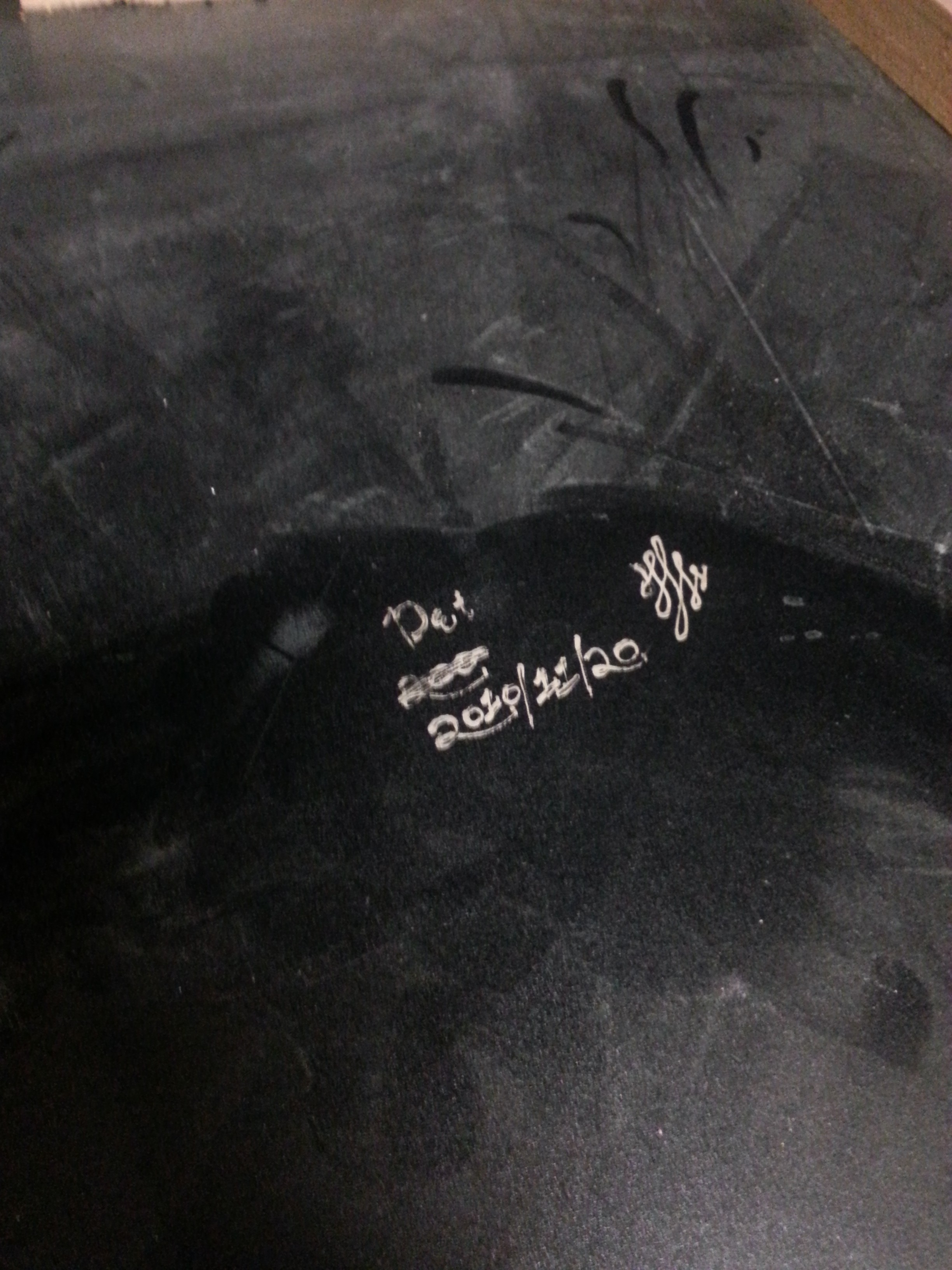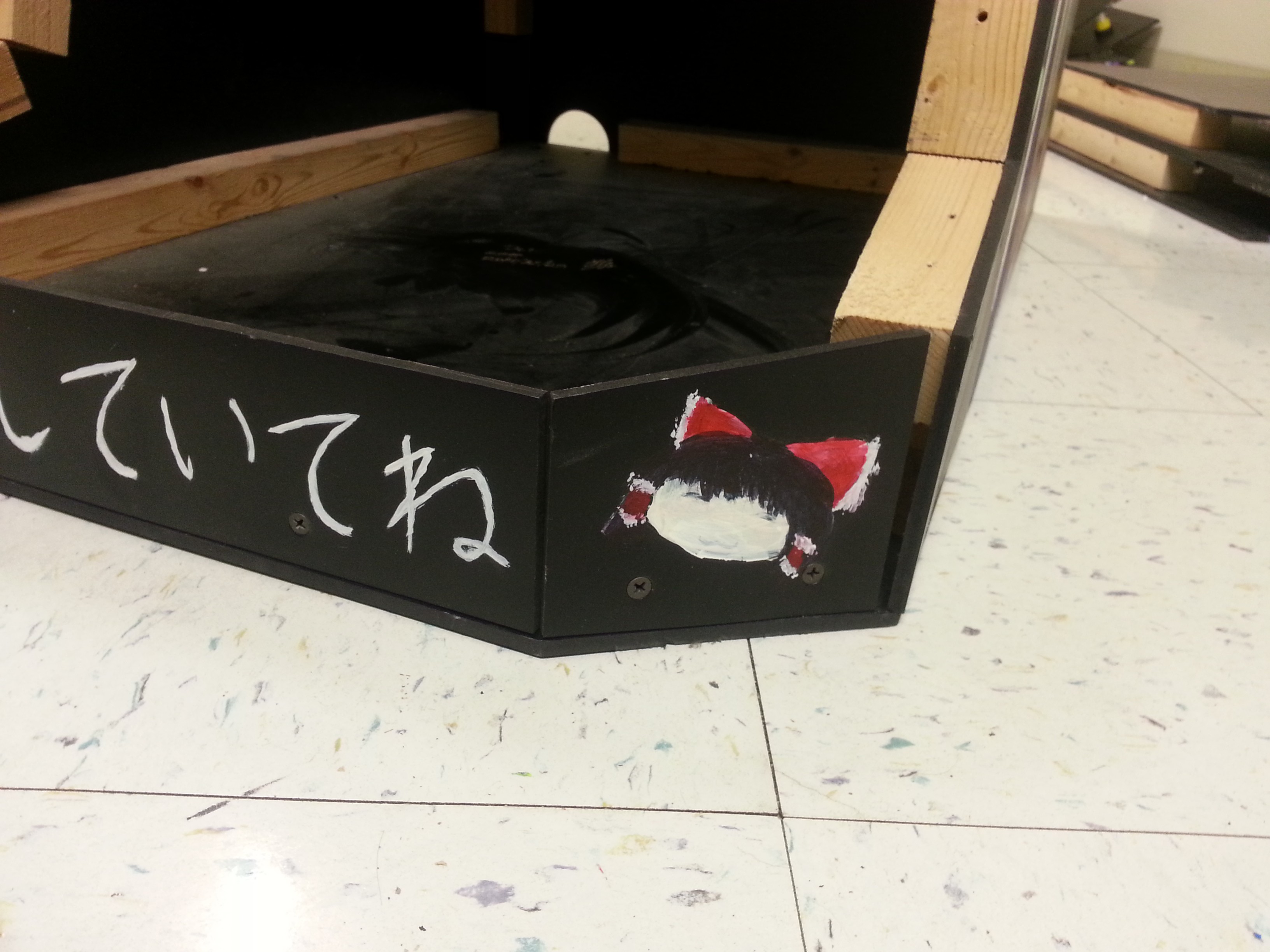The outer shell material is black expanded pvc painted with blacklight sensitive acrylic paint. The UV paint was actually transparent, so there's a layer of white primer underneath. The "frame" is just small segments of 2"x2" anywhere the plastic forms a right angle. The screen is an old CRT monitor behind a sheet of polycarbonate. The monitor bezels and the polycarbonate were masked and painted black. Everything is attached with short drywall screws.
The control board is a hacked up keyboard with SuzoHapp switches attached in place of keys. This and the monitor plugged into a computer running the game. 3 machines ran Packman, 3 machines ran Grid Wars, a clone of Microsoft's Geometry Wars, and 8 machines ran a lightcycle game called Armegatron Advanced. This specific copy allowed for player drop-in/drop-out and multiplayer across multiple computers. We set up two sets of 4 machines, where each set of 4 players could play against each other. Lastly, there were two signature machines. Mine ran Einhänder. Raymond's ran Tou-Hou.
 Samuel Wittman
Samuel Wittman The outer shell material is black expanded pvc painted with blacklight sensitive acrylic paint. The UV paint was actually transparent, so there's a layer of white primer underneath. The "frame" is just small segments of 2"x2" anywhere the plastic forms a right angle. The screen is an old CRT monitor behind a sheet of polycarbonate. The monitor bezels and the polycarbonate were masked and painted black. Everything is attached with short drywall screws.
The outer shell material is black expanded pvc painted with blacklight sensitive acrylic paint. The UV paint was actually transparent, so there's a layer of white primer underneath. The "frame" is just small segments of 2"x2" anywhere the plastic forms a right angle. The screen is an old CRT monitor behind a sheet of polycarbonate. The monitor bezels and the polycarbonate were masked and painted black. Everything is attached with short drywall screws. The sides attached to the bottom. We put rubber feet on the bottom in the corners and under the monitor to keep the machines from sliding on the tables.
The sides attached to the bottom. We put rubber feet on the bottom in the corners and under the monitor to keep the machines from sliding on the tables. The front trim attached. We took care to make sure all of the lines were continuous over the whole machine.
The front trim attached. We took care to make sure all of the lines were continuous over the whole machine. Back attached. There's a 2"x2"
Back attached. There's a 2"x2" Top attached.
Top attached. Front panel attached.
Front panel attached. Monitor inserted and marquee attached. The monitor needed to be inserted before the marquee was added.
Monitor inserted and marquee attached. The monitor needed to be inserted before the marquee was added.

 The whole machine. Unsure where the control panel ended up.
The whole machine. Unsure where the control panel ended up. Front corners
Front corners
 Side panels.
Side panels.
 I have more pictures somewhere. I have to dig them out.
I have more pictures somewhere. I have to dig them out.
 tsquar3d
tsquar3d
 zittware
zittware

 jason.gullickson
jason.gullickson